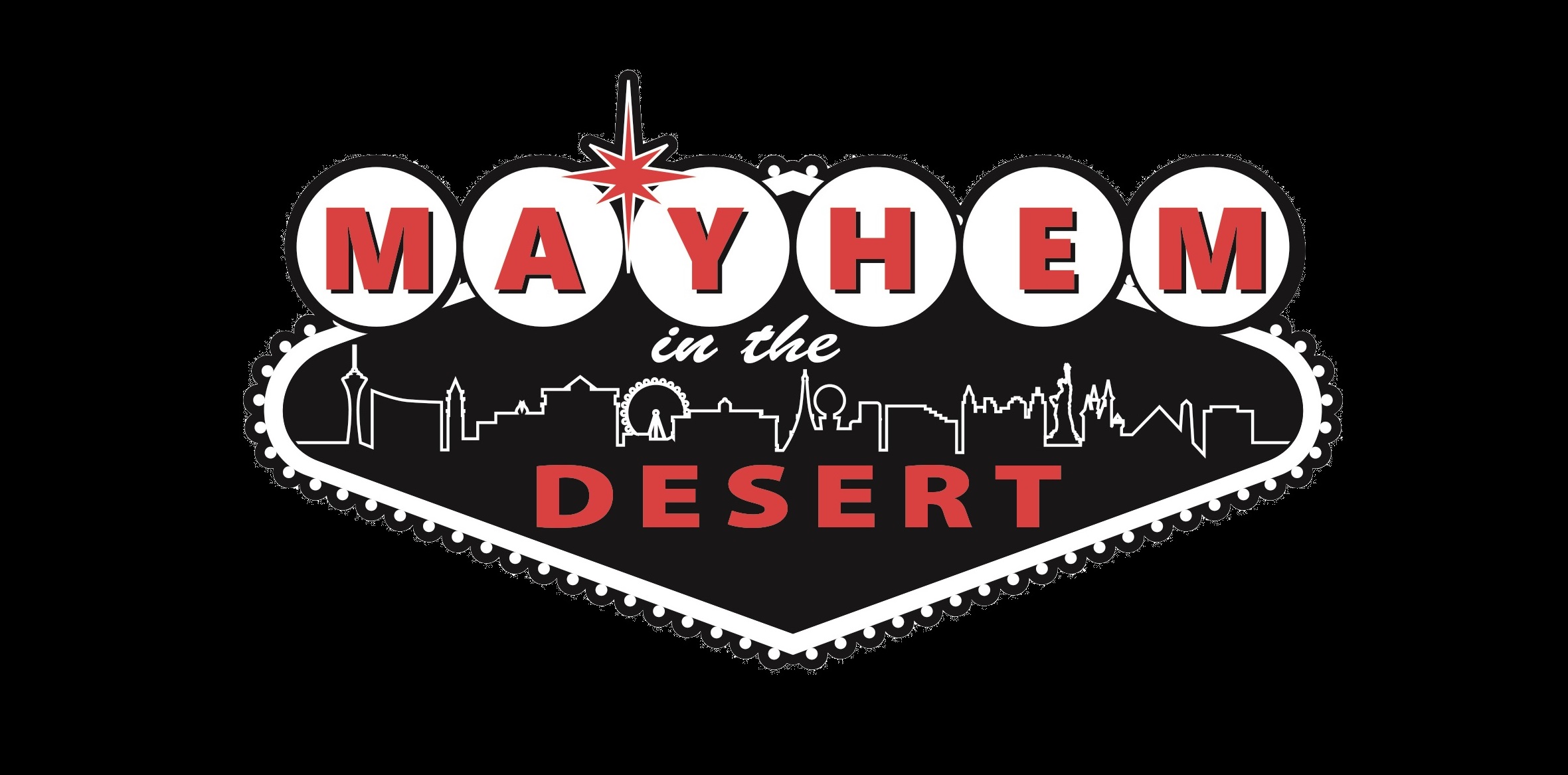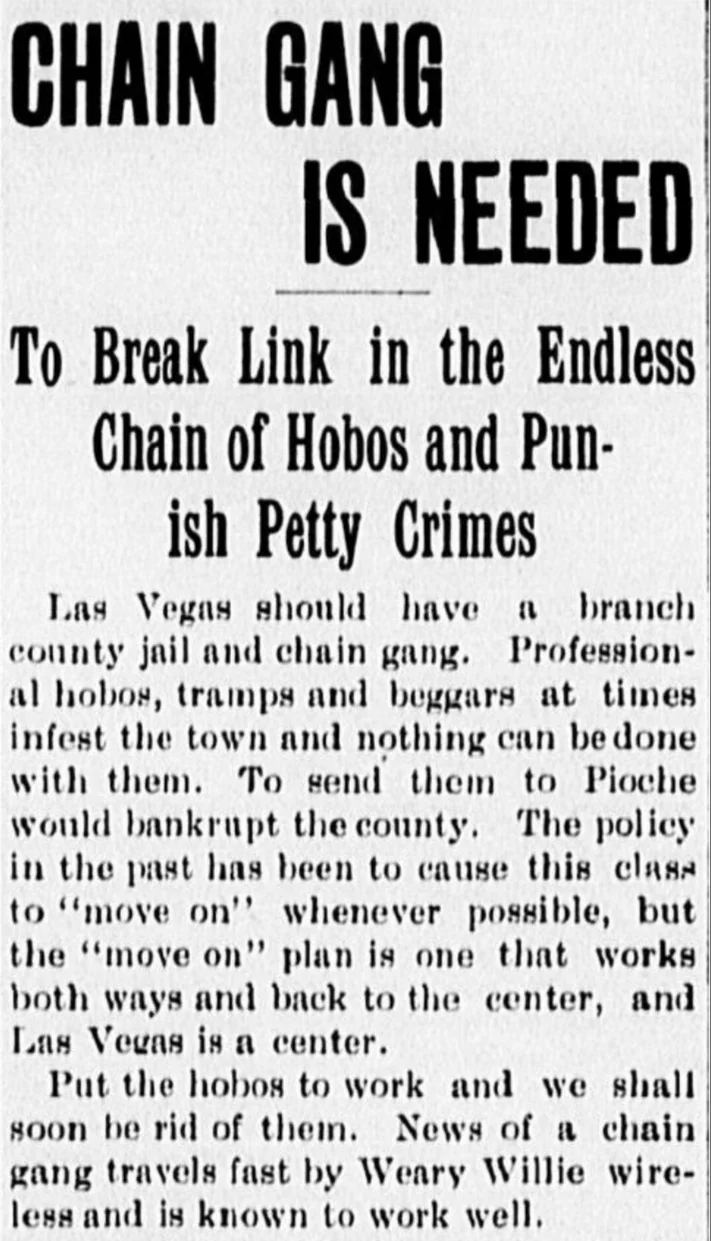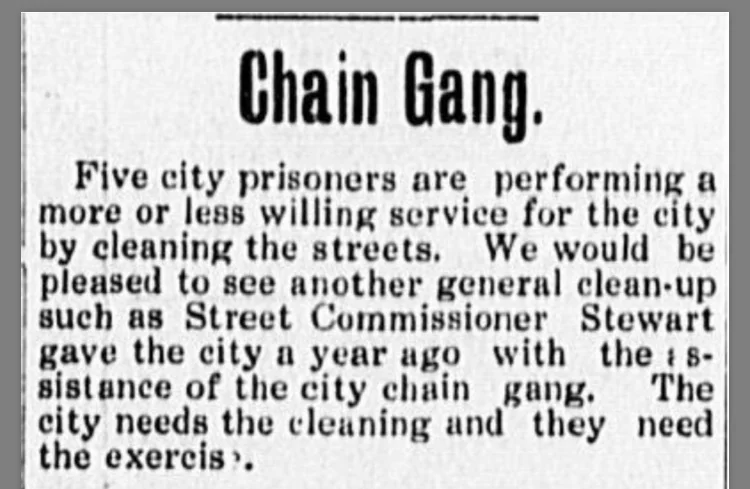the Chain gangs of old vegas
“Put the hobos to work and we shall soon be rid of them. News of a chain gang spreads fast by Weary Willie wireless.”
Article from Las Vegas Age, circa 1907 (UNLV Digital Collections)
a brutal punishment
Chain gang. Those two words instantly conjure images of prisoners sweltering in the hot sun on a rural southern road chipping away at rocks with pickaxes while a stern guard stands watch, the shotgun in his arms silently conveying to the inmates the consequences of disobedience.
But while chain gangs were most common in the southern United States from the period after the end of Reconstruction to the 1940’s, this extreme form of dehumanizing punishment also made an appearance in a sleepy desert town dotting the railroad line between Salt Lake City and Los Angeles.
Photo of a chain gang in Oakland, California working on a road project, circa 1910. Nevada and California made common use of chain gangs to deter “hobos” and “tramps” from staying within their jurisdictions for too long.
chain gangs and hobos in early vegas
Within two years of Las Vegas being founded, the city enacted an ordinance permitting petty crimes to be punished with a sentence to the local chain gang. The city’s only newspaper, the Las Vegas Age, enthusiastically championed the use of chain gangs as a means of dealing with “hobos” and “tramps” that made their way to the newly established rail hub town in the course of their travels via boxcar.
The Age makes clear that the unofficial policy had been to urge vagrants to “move along” but this strategy proved ineffective. The newspaper also lamented that jailing those begging and hanging out in Las Vegas would cost the county too much in room and board.
It seems there was no opposition to the policy of using chain gangs among the young town’s political and business leaders. In fact, within a few years of Las Vegas passing the first chain gang ordinance, the use of prisoners on a chain gang to perform menial labor on behalf of the municipality was taken as a given. Helen Stewart, the first commissioner of streets for Las Vegas, proudly employed chain gangs for a “City Beautiful” project in 1912 to clean up litter from the city’s vacant lots.
The practice of using chain gangs persisted in Las Vegas through the 1910’s and early 1920’s.In addition to vagrancy, the other sorts of charges that led to a period on the local chain gang were petty theft and public drunkenness. And there were at least some occasions when prisoners on the chain gang refused to work, but local authorities dealt with such informal strikes by sending the prisoners to the cramped, poorly insulated county jail on a diet of bread and water.According to local press accounts, this “carrot-and-stick” method was effective in gaining compliance from those sentenced to the local chain gang.
Las Vegas Age article, circa 1910 (UNLV Digital Collections)
a different chain gang system than the south
Little information was able to be garnered regarding the racial composition of those sentenced to the Las Vegas chain gang. However, California frequently utilized chain gangs for similar purposes to Las Vegas – combatting vagrancy, punishing husbands that failed to support their families, and deterring petty crime – and a review of California newspaper accounts from the first two decades of the 20th century gives the appearance that chain gang use there was generally applied across racial lines.
While the development of chain gangs for forced labor, largely road construction, was a continuation of slavery by another name in the States of the former Confederacy, the use of chain gangs in western States such as Nevada seems to have been driven by a desire to deal with the influx of idle newcomers traveling by rail as well as a lack of resources by local officials to otherwise incarcerate such individuals.
Article quoting Las Vegas city officials regarding reviving the chain gang system.
the end of chain gangs
And while chain gangs in Las Vegas were used to perform public maintenance tasks like cleaning the streets, the use of chain gangs in neighboring California at this same time focused on reforming “hobos” by having them perform useless labor, such as breaking rocks for no purpose, as a method of teaching such people the routines of labor, the thinking being that if such hobos could be taught to engage in routine meaningless work, they would be more likely to engage in work with a purpose.
Chain gangs fell out of use in Las Vegas by the mid-1920’s, though with the influx of newcomers that came with the building of Hoover Dam, local officials again openly discussed renewing use of the chain gang system to deter idle individuals from spending too much time in Vegas.As for the rest of the country, by the 1930’s the larger American public had begun to turn against the use of chain gangs due to the many possibilities for abuse inherent in such a system.And while some States briefly renewed use of chain gangs during the “tough on crime” 1990’s, the practice has essentially been de facto abolished in the United States.




